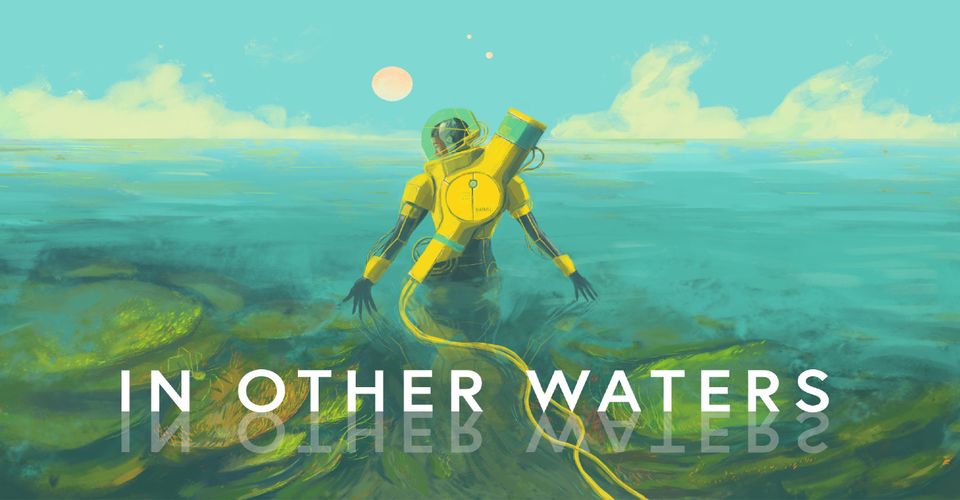In Other Waters Review: A Slow, Sentimental Mystery

On the surface, In Other Waters can be described as an ultra-minimalistic narrative game. Mostly developed by one man at Jump Over the Age and published by Fellow Traveller, this modestly-funded Kickstarter project is an undeniably original game – and yet many of its elements parallel other titles. For example, the questions about artificial intelligence and identity in SOMA. The lonesome survival on an aquatic world in Subnautica. The biodiversity and sense of discovery in No Man’s Sky. In Other Waters is reminiscent of all these games without looking or playing anything like them. It’s a sentimental but pointed mystery with a soothing, attractive aesthetic, even though it can occasionally be a chore to play.
In Other Waters takes place in the distant future on Gliese 677Cc, a completely oceanic planet at the edge of explored space. Dr. Ellery Vas, a xenobiologist, has traveled to this distant world following a mysterious message from her long-lost partner Minae Nomura. After finding a strange, empty diving suit, Ellery puts it on to discover that it is controlled by a super-advanced AI. The player takes on the role of this AI and directs Ellery across the ocean floor, where she soon makes an even greater discovery: Gliese 677Cc is home to aquatic life. This is humankind’s first known contact with alien lifeforms, which compels Ellery to explore and analyze everything while searching for her missing partner. As she dives deeper and deeper into this planet’s biological history, Ellery will learn more about herself, Minae’s motivations, and a dark truth that was never meant to be found.
The basic gameplay of In Other Waters requires some explanation: it’s played almost entirely through the lens of a radar-like overlay. This simple but stylish interface allows the player to set headings for Ellery, examine biological samples, and more. Everything in the aquatic world, from creatures to points of interest, are displayed as highlighted chevrons accompanied by evocative descriptions. The two-tone aesthetic is paired perfectly with atmospheric sound design, creating a uniquely serene experience. For both better and worse, the game doesn’t provide much visual identification; it asks the player to flex their imagination and envision the world for themselves. In Other Waters conveys the feeling of an old fashioned text adventure game: slow-paced and wordy, but also intriguing and involving.

Most of the actual interactions with the world come down to observing new flora and fauna while collecting samples for analysis. Samples can also be tossed out into the environment to see how they affect the surrounding ecosystem, which leads to more new data in turn. A handful of spores might attract a creature that feeds on them, or a bursting bubble may cause fungi to retract out of the way. These peaceful activities help Ellery build an understanding of this alien planet, and produce an overarching theme of symbiosis between species. On the other hand, it’s not strictly “fun” – especially when retreading old areas in order to advance the story or gather additional data. The game can seem like a chore when even an incremental movement requires three separate inputs, and the novelty of experimenting with samples wears off after a while.
Despite its cumbersome navigation, In Other Waters keeps the player engaged as its central mystery continues to unfold. Following in Minae’s footsteps, Ellery uncovers stark revelations about her partner’s reasons for coming to Gliese 677Cc… and what really happened on this planet. Given the piecemeal nature of the story, almost every bit of information can be considered a spoiler, but its themes are what matter most. Dependency and deception, natural life and artificial life, and uniquely human greed are all combined to tell an urgent tale of environmentalism – and ultimately, hope. In Other Waters isn’t breaking new ground with these themes (they aren’t uncommon in other modern narrative titles), but the game still makes them as poignant as they are relevant.

To be honest, those who aren’t on board for a slow-paced, text-heavy and visually minimalistic narrative game should probably skip In Other Waters. For those who are, there’s plenty to like here – even if it doesn’t exactly redefine the genre. In Other Waters shows an earnest appreciation for the science of biology, deftly fusing it with an important message and an almost therapeutic aesthetic. It’s worth the time and money for anyone who wants something a little different out of their next narrative game.
In Other Waters comes to Steam and Nintendo Switch on April 3, 2020 for $14.99. A Steam code was provided to Screen Rant for the purposes of this review.

















